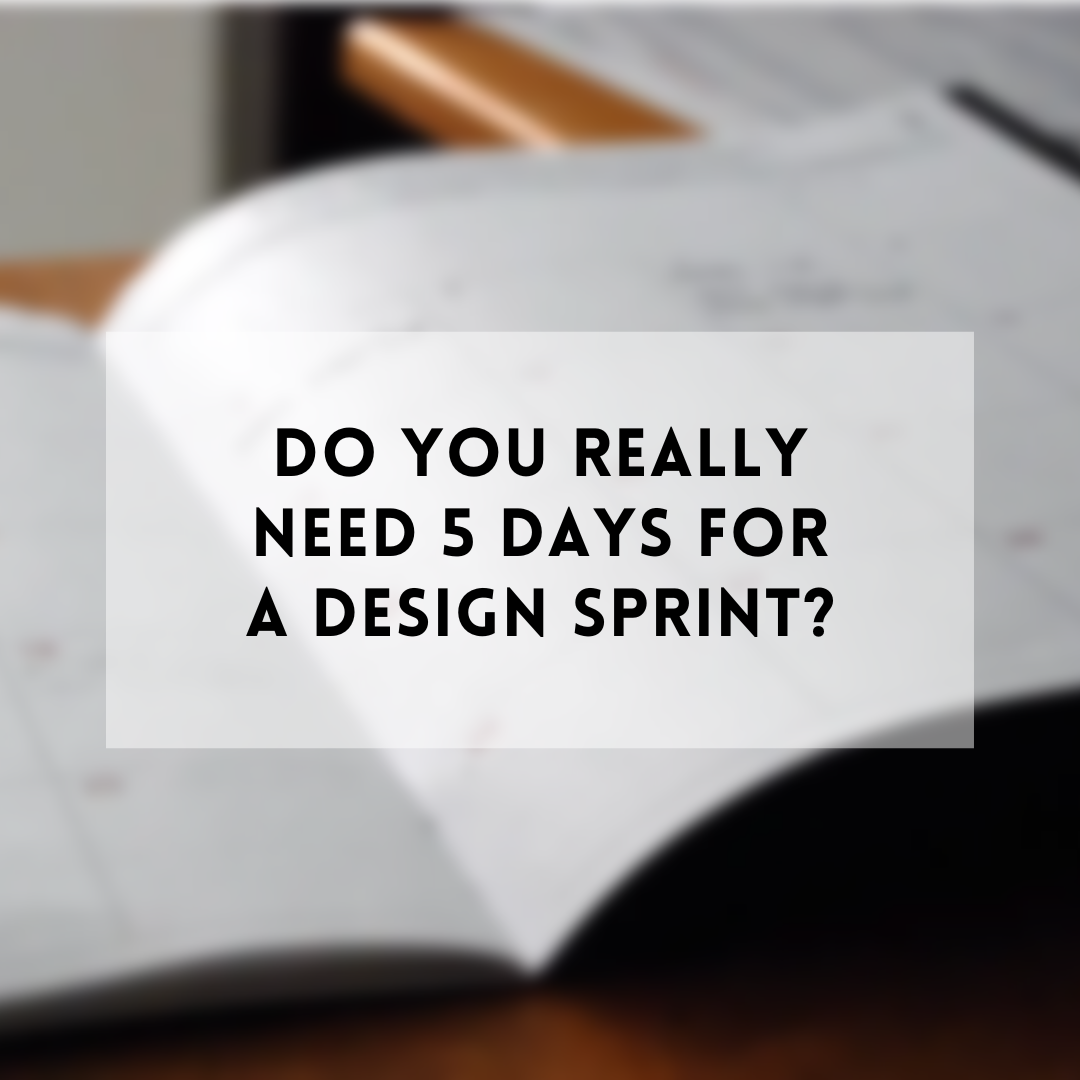Do you really need 5 days for a Design Sprint?
I get this question all the time. Is it true? Do you really need five whole days for a Design Sprint? It might seem like a lot of time initially, but the truth is that five days really isn’t that much time if it keeps you from investing months, maybe even a year, in something that isn't right.
The first step is to ask yourself if the problem is worth spending five days solving. If the answer is no, then a strategy workshop or a shorter collaborative design session may be more appropriate than a Design Sprint (good news, I love facilitating these, as well).
If the answer is yes, then it’s best to commit to the tested process of five full days, especially if you’re leading or participating in a Design Sprint for the first (or even fifth) time.
At this point you may recognize that a Design Sprint is a good fit for your business, but find yourself looking for ways to skip a day or two, or edit the format. Resist the urge! You’ll be happy you did. I’ve been facilitating Design Sprints for five years and running collaborative workshops for even longer, so I’ve seen many variations of the process. What I love about the five-day timeframe of a Design Sprint is that it offers enough breathing room to really explore the problem space then design and prototype an awesome solution without cutting corners just for the sake of saving a few hours.
If you’re new to Design Sprints, consider the analogy of learning to bake a cake for the first time. To do it right, you’ll need a recipe so you can follow the step-by-step instructions and use all the right ingredients in order to bake a beautiful cake. If you’re new to baking the cake, you wouldn’t fly by the seat of your pants and do whatever you want because un-tested substitutions and changes might result in your cake falling flat. In fact, you might not end up with a cake at all — it might be more like a crêpe.
Now, don’t get me wrong, there are always scenarios where adapting the format and the agenda may make sense, and I’m comfortable doing it occasionally because of my experience working in the space. However, if you’re just getting started I recommended sticking to the format. Hire a seasoned facilitator, or follow the Design Sprint book to get comfortable facilitating before you start making changes. There are plenty of resources and tools available to make the process seamless, and using the tried-and-true recipe will set you and your business up for success.
